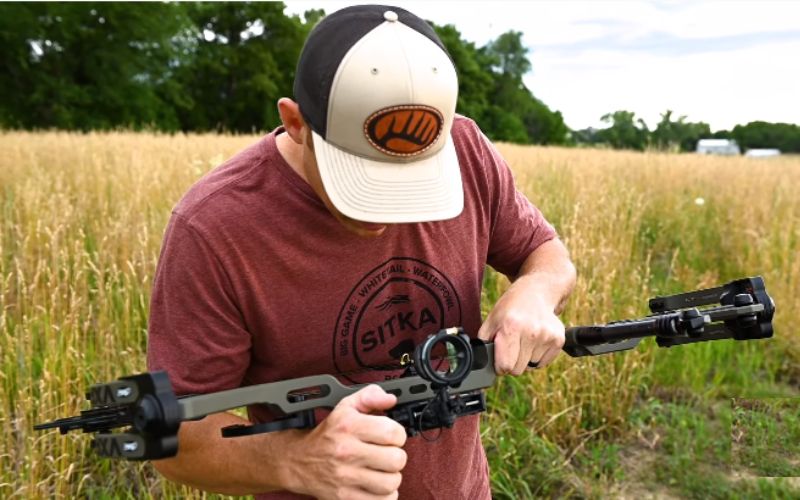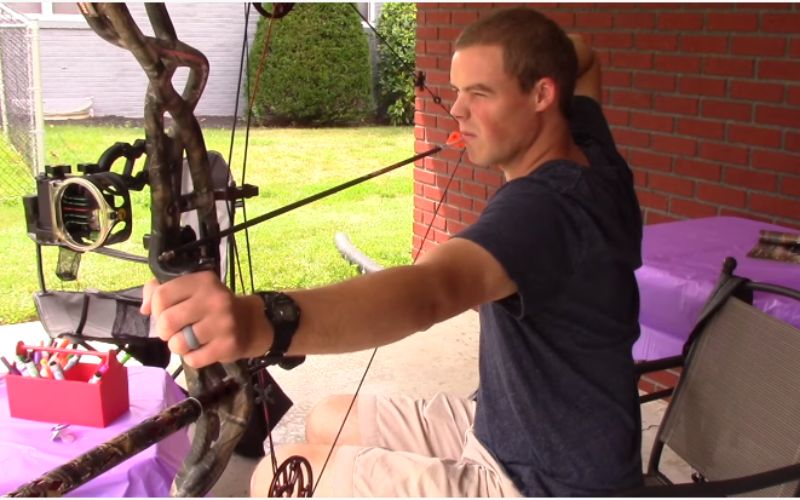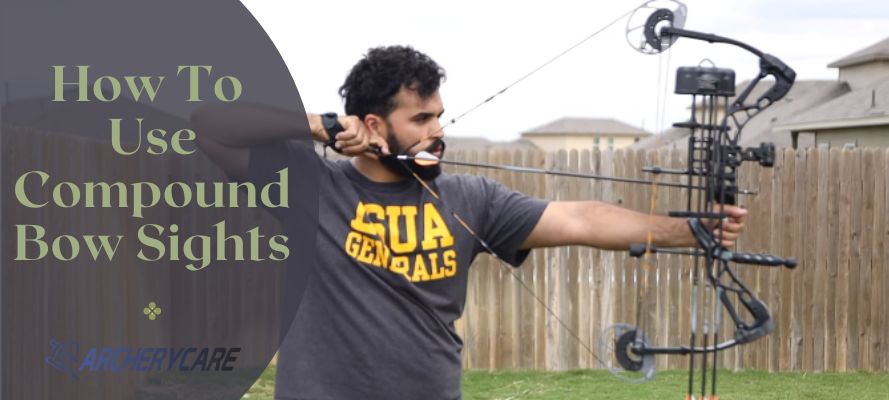From an archer’s perspective, bow sights just give them a better chance at hitting a bull’s eye. However, if you’re wondering how to use compound bow sights, they’re not the easiest thing to use.
The pins in the compound bow sights must be adjusted based on how many yards are between the bow and the target. Therefore, the significance of the two different sorts of pins in a bow sight comes next.
Single Pin sights are the most difficult to strike the target but the easiest to change for different distances.
In contrast, a multi-pin sights are difficult to calibrate but offers the archer a choice of ranges for the target to be shot.
Let’s know about them in dept and how to sight in compound bow!
Table of Contents
Using Single Pin Sight On Your Compound Bow
If you prefer a clear sight over a chaotic one, a single pin is your best bet in this situation. The single-pin sight is also simple to install but challenging to operate without training.
To achieve an exact shot with this one, you just need to set the pin once at a specified yard.
With the right measurements, raising the bow will give you a longer-range shot. However, reducing it will offer you a smaller yard shot. But they are also easier to use than multiple-pin bows once you get the hang of them.
Here's the right way how to use bow sight with single pins;

Step 1: Choosing the yardage
The range of distance you would need to shoot with the single pin must first be determined. We're expecting that you frequently need to shoot from 20 to 40 yards away. As a result, you should pick the 30-yard line as your middle ground in this situation.
Step 2: Get in position for your chosen yardage
After deciding on the appropriate distance, you then need to move away from the target by that amount of space - known as your 'yardage'. You can measure it using a yardstick.
Step 3: Aim three arrows at the target
If you're an amateur archer, it's not uncommon to see arrows that don't stick together. In such cases, you may have pushed the bow too far up or down or the arrow may be faulty. Use the appropriate bow position and arrows to redo the process again.
Step 4: Shoot a single arrow and follow it
For measures that are less crowded, you should now take the three arrows you just fired and shoot another one. After shooting, you would need to follow the arrow.
Take note of it, for example, if the arrow left the target and went to the right. On the other hand, if it has deviated little from your aim, record that as well.
Step 5: Calibration
Hold your eye at the same angle as previously as you pass it through the sight aimer. Use the notes you have taken to calibrate it now. Use the top-bottom or left-right on the dials to calibrate it.
If the arrow was pointing right toward the target, turn the dial right. The same is true for the top, bottom, and left.
However, you need to repeat these steps a few times until you get the precise shot.
Using Multi Pin Sight On Your Compound Bow
Multipin sights include three to five pins instead of just one, therefore the more pins it has, the more convenient it will be for you. It will also have different ranges of pins based on different yards, which requires less regular calibration but is challenging.
If you wish to utilize multipin sights, you must be more familiar with the distance than the location of the bow. An Allen wrench is required to replace the dials, which is a downside.
Therefore, calibrating it properly is crucial to getting the best results.
Here’s how you do it.

Step 1: Choosing different yards for the pins
The first step is to decide how many yards you want to travel with each pin. Measure the distances with a yardstick and note them as you'll need to shoot from chosen yards from the target at a time.
Step 2: Sight box adjustment
The sight box needs to be adjusted following the pin you intend to use. Move away until you are in the yard where you want each pin to adjust, then modify the sight box accordingly.
Later, shoot three arrows from each yard, and record which yard’s pin hit the specific area of the target.
Step 3: Follow the arrows
Once the arrows have bonded together, return and shoot new arrows at different distances. However, this time, utilize just one arrow.
Note which matrix each arrow is to the goal. Write down the top-bottom and left-right measurements much like the single pin technique.
Step 4: Final Calibration
Using an Allen wrench, you need to finalize the calibration of the pins before you shoot a compound bow with multiple pins. For each pin, adjust the sight and move the dial using an Allen wrench for each.
If the arrow on the target that the pin was used to hit was to the left, you must turn the dial left as per the notes. However, by calibrating it just once, you won't get the bull's eyes. Repeat it enough times to eventually acquire the eye.
What Distance Should You Set Your Compound Bow Sights?
The target you will be firing at and your prior experience are the only factors that matter. We advise adjusting for the standard 30-yard mid-range for a single pin. With some practice, you can shoot both from 20 to 40 yards if you raise and drop the bow.
On the other side, you have many possibilities with a multiple-pin bow sight. We would prefer that you utilize the method that keeps their spacing equal. For each of them, you may start at 10 and go as high as 50 with a five-pin one. However, you can maintain their gaps worth 20 if you have a three-pinned one.
Compound Bow Sights Tips And Tricks
There aren't many pointers and tactics that may be shared to aid you when it comes to bow sights.
Since there aren't any hacks available, it's more about accumulating experience than anything else.
How far your arrow is from the target may be determined by taking measurements while maintaining the same anchor points. However, the most useful advice comes from setting up a day once a week to practice with bow sights - and shooting the arrows correctly is the most important step.
Conclusion
If you’re still asking how to use compound bow sights. While shooting with a single-pin bow sight might be challenging, calibrating a multiple-pin bow sight requires more time.
When you don't have any prior knowledge of bow sights or anticipated yards, the benefit you might receive from using several pins is faultless. Without having to recalibrate it, you can shoot targets at 20 and 50 yards with ease.
Yet, the single-pins only need hands to get calibrated as well as give the archer an uncluttered experience on the view.
Read Related Guides:

